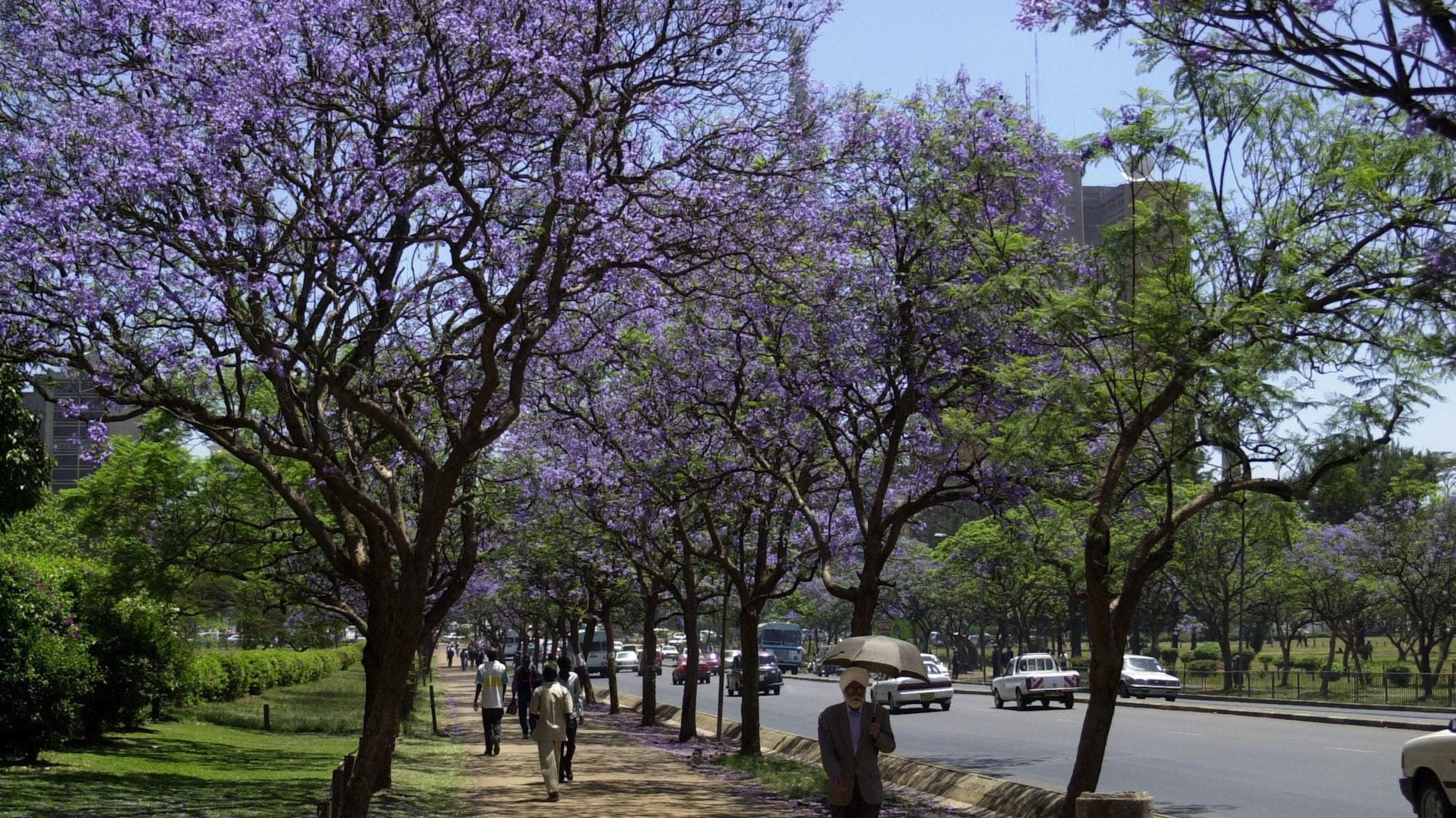Photos: Nairobi’s jacaranda season is a reminder of the city’s beauty—and the need to protect it
Every year in early October, clusters of purple haze dot Nairobi’s tree line as the city’s jacaranda trees come into bloom. This year, Kenyans have taken to posting photos of the tree, with its slender zig zagging limbs and purple-blue panicles, under the hashtag #JacarandaPropaganda.


Every year in early October, clusters of purple haze dot Nairobi’s tree line as the city’s jacaranda trees come into bloom. This year, Kenyans have taken to posting photos of the tree, with its slender zig zagging limbs and purple-blue panicles, under the hashtag #JacarandaPropaganda.
It’s become a small online celebration of the beauty of a city whose residents usually complain about its bad traffic, poor roads, and pollution.
The hashtag, which first appeared last year, has also highlighted the disappearing trees of a city once nicknamed “green city in the sun.” Trees that once framed main roads are being cut to make room for road expansions or new highways. Others are being cut for new apartment buildings, billboards, and, in some cases, for no stated reason at all.
The most recent example has been the upgrading of one of the city’s most used arteries, Ngong Road, from a congested two-lane road into a four-lane carriageway. Trees on either side of the original road have been cut to make room for the new lanes. Some may be replanted—”landscaping and planting of trees” is included in the plan for the expansion of 2.7 km (1.7 miles) of road.
Developments like these are happening more and more, according to Philomena Muiruri, who teaches urban geography at Kenyatta University. She says that one reason for the uptick is that trees and open spaces on private land are not protected, so owners are free to change use of the land.
“Public spaces, which are protected under city planning legislation, are the only hope for the city,” Muiruri says, referring to parks, forests, and other recreational spaces.
But these green spaces are also shrinking. The city’s largest tree preserve, Karura Forest, has been whittled down to almost half its original size of 1,063 hectares (2,627 acres). The forest was saved from being turned into a golf course by environmentalist Wangari Maathai, who won a Nobel Peace prize for her work.
Another park, the Ngong Forest, has been cut down to half of what it was when first established in the 1930s because of illegal logging, according to local journalists.
The jacaranda tree also connects African countries. The flowering tree, native to South and Central America but favored by British colonials, was planted throughout British-run Africa. South Africa, home to the “jacaranda city” of Pretoria, may soon join in on the jacaranda propaganda campaign.